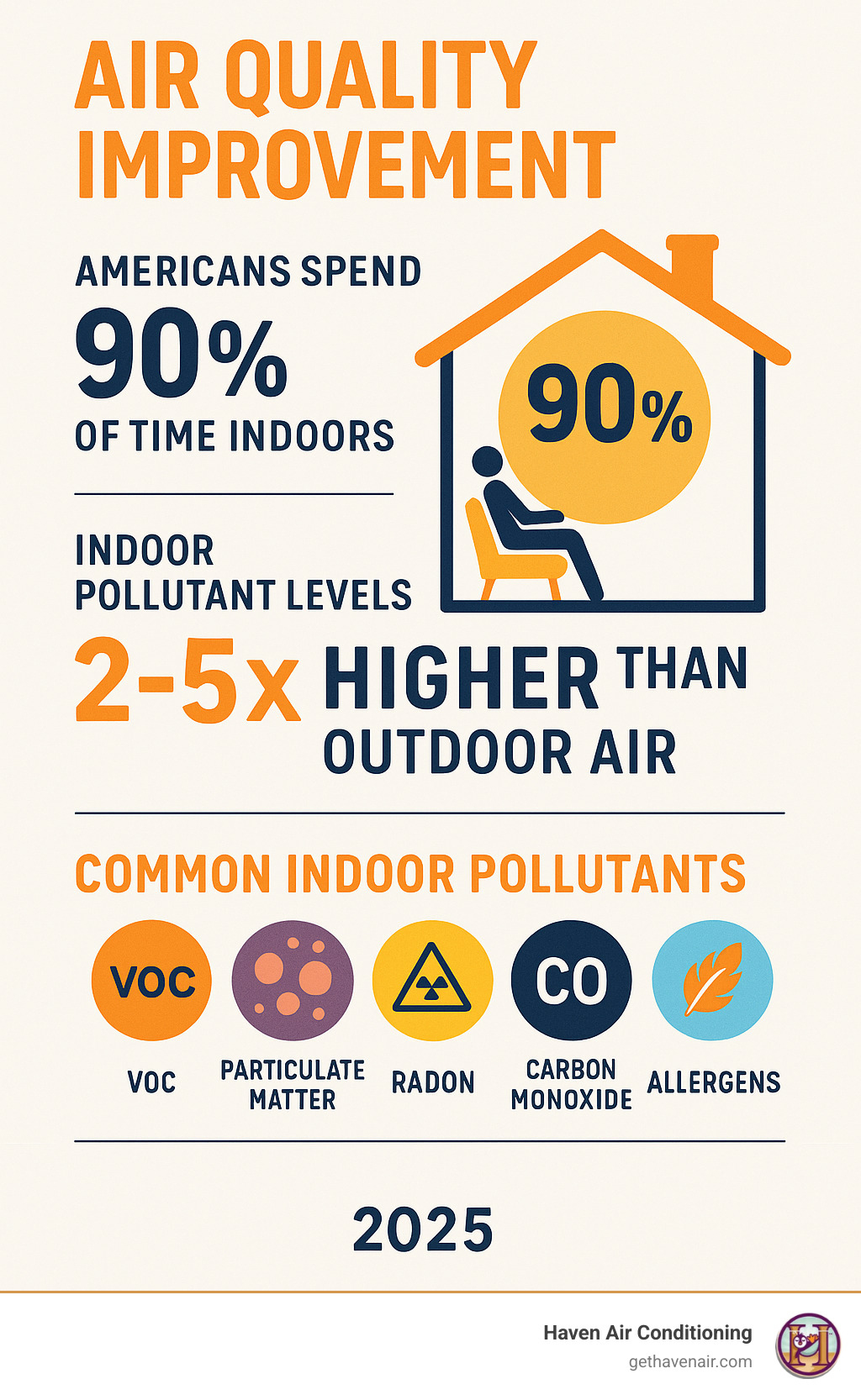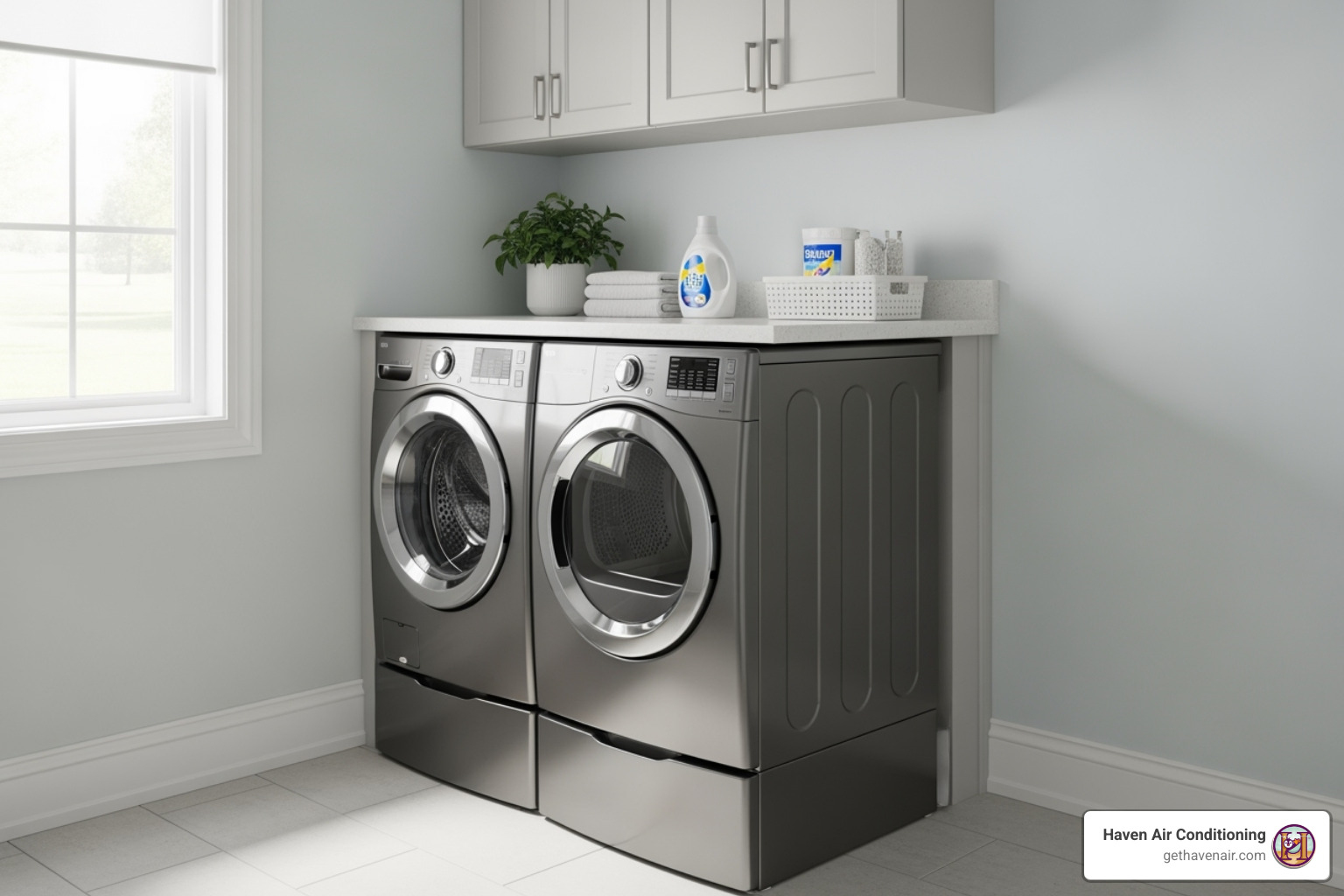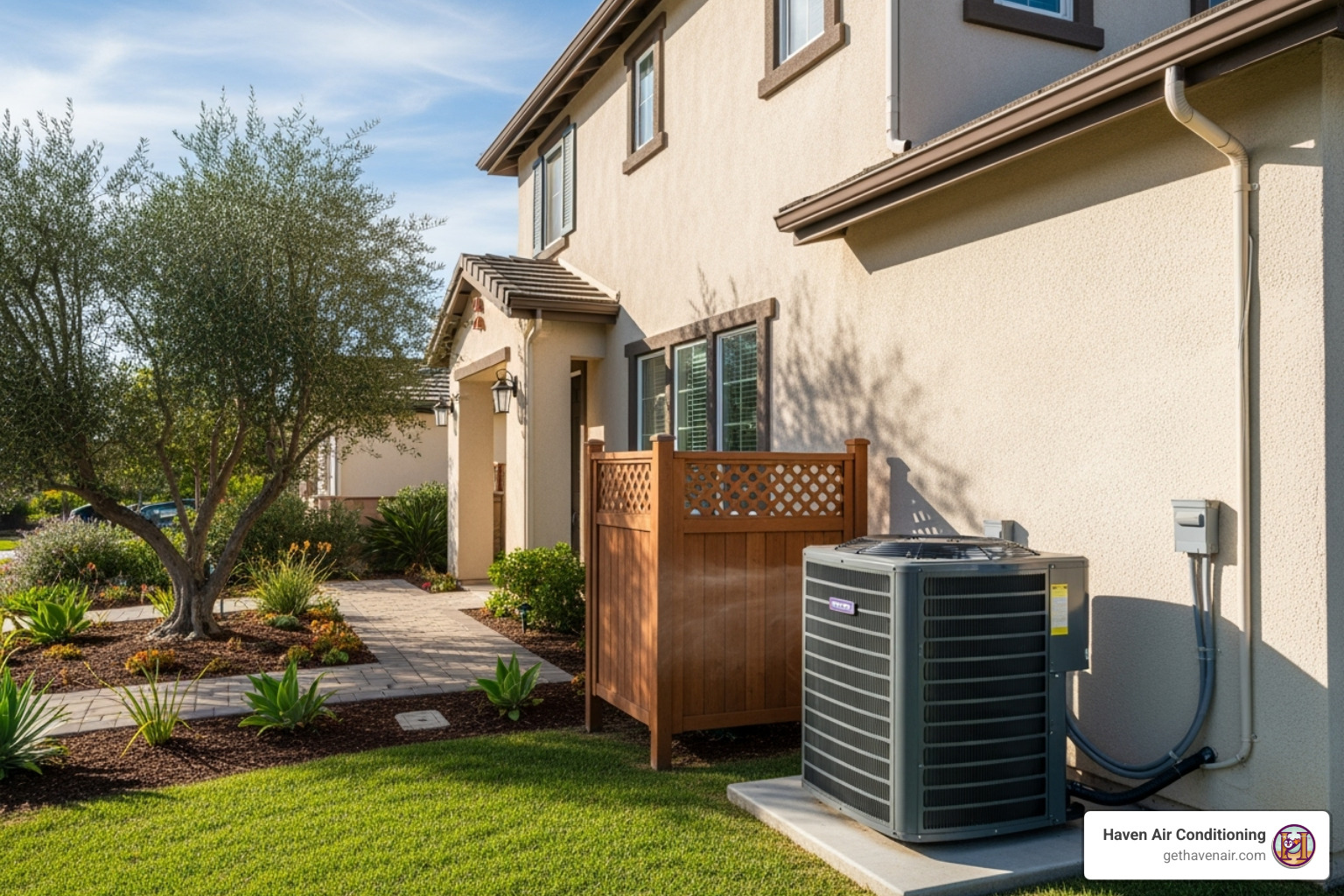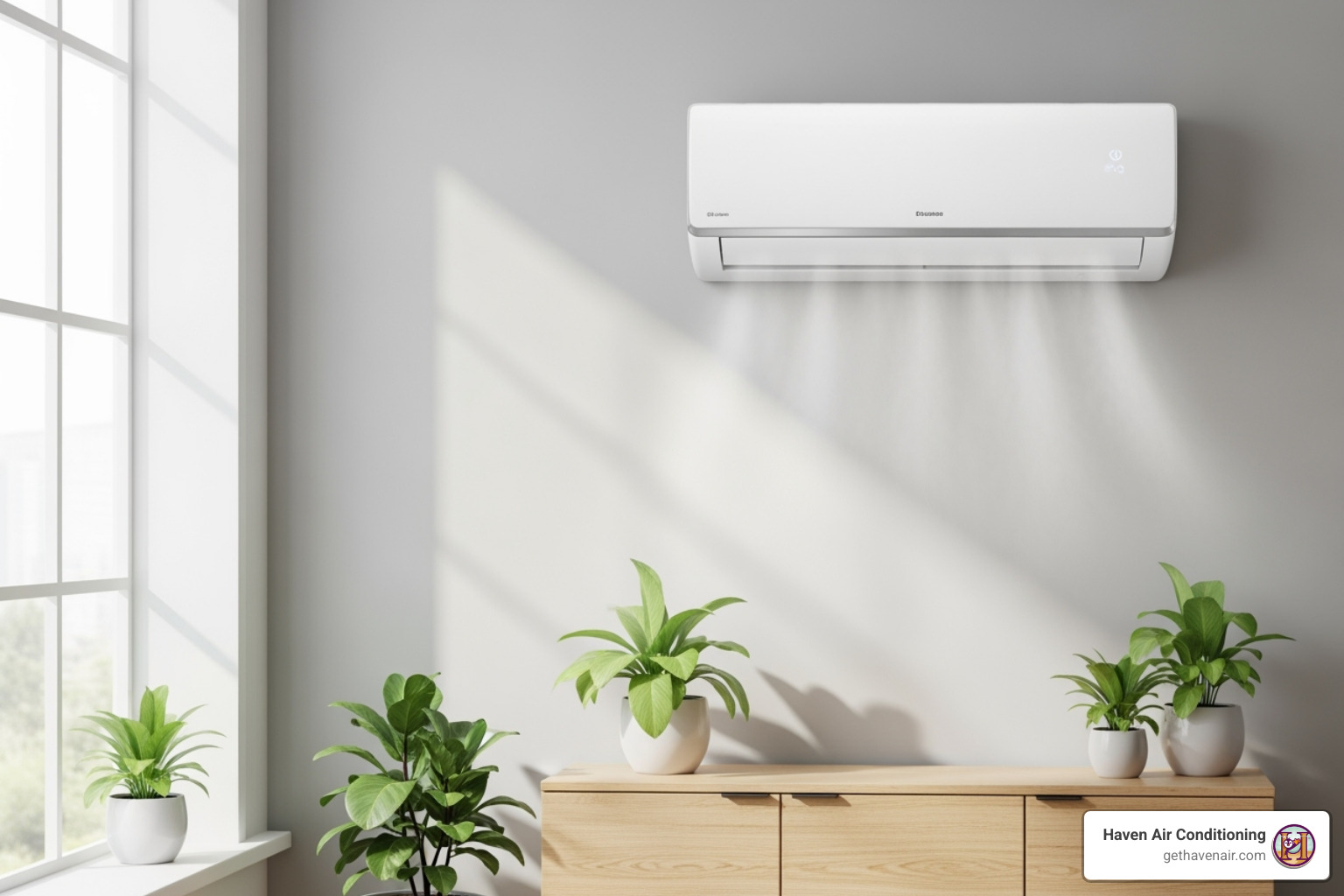Why Indoor Air Quality Deserves Your Immediate Attention
Air quality improvement starts with a simple fact: Americans spend about 90% of their time indoors, and indoor pollutant levels are often 2-5 times higher than outdoors. Here are the most effective strategies to improve your home’s air quality:
- Source Control – Remove or reduce pollution sources (most effective and cost-efficient)
- Improved Ventilation – Increase outdoor air circulation and dilute indoor pollutants
- Air Cleaning – Use filters and purifiers to capture remaining contaminants
The air inside your Orange County home affects your family’s health every day. Poor indoor air can trigger headaches, eye irritation, and breathing difficulties, and over time can raise risks for respiratory and cardiovascular disease.
The most vulnerable family members – children, elderly relatives, and those with existing health conditions – face the greatest risks from indoor air pollutants.
Common indoor pollutants include fine particulate matter, volatile organic compounds (VOCs) from household products and building materials, radon gas, carbon monoxide from combustion appliances, and allergens like dust mites and pet dander.
Why Indoor Air Quality Matters: Sources and Health Risks
When we think of air pollution, we often picture smoggy skylines. But the air inside your Orange County home is often 2-5 times more polluted than the air outside. This cozy environment can harbor invisible threats that affect our health daily.
Air quality improvement becomes essential when you realize we’re breathing a complex mixture of gases and particles – most too tiny to see with the naked eye. These microscopic invaders impact our wellbeing, making it crucial to understand them. You can learn more about indoor air quality from the EPA to dive deeper into the science.
Common Sources of Indoor Air Pollution
Many indoor air pollutants come from ordinary parts of our daily lives, and your home’s air quality challenges likely stem from these everyday sources.
Combustion appliances top the list of concerns. About two-thirds of American households burn fuel for heating, cooking, and hot water. Your gas stove, furnace, water heater, fireplace, or wood stove can release dangerous pollutants like carbon monoxide, nitrogen dioxide, and fine particulate matter – especially when they’re not properly vented or maintained. Even something as simple as lighting candles or burning incense adds to your indoor pollution load.
Building materials and furnishings create another major source through off-gassing. Modern construction materials, furniture, and carpeting can release Volatile Organic Compounds (VOCs) for years after installation. These chemicals hide in adhesives, paints, varnishes, and synthetic fabrics, slowly evaporating into your breathing space.
Your household products contribute more than you might expect. Cleaning supplies, air fresheners, personal care items, pesticides, and hobby materials often contain VOCs and other chemicals that evaporate directly into your home’s air. Tobacco smoke remains one of the worst offenders, filling indoor air with particulate matter, VOCs, and toxic chemicals that endanger everyone in the household.
Mold thrives wherever excess moisture exists – from leaks, high humidity, or condensation problems. Once established, mold releases spores that become airborne allergens, triggering respiratory issues and other health complications.
Even our beloved pets contribute through pet dander – those microscopic skin flakes that float through the air along with pet hair, causing allergic reactions in sensitive family members. Pests like dust mites and cockroaches add their own allergens through droppings and body fragments that become part of household dust.
Perhaps most concerning is radon – an invisible, odorless, tasteless radioactive gas that seeps into homes through foundation cracks. This natural gas is the second leading cause of lung cancer in the United States.
The Health Impact of Poor Air Quality
Poor indoor air quality has immediate and long-lasting health effects, ranging from annoying to life-threatening.
Short-term effects often appear quickly after exposure and include headaches, eye irritation, throat inflammation, coughing, difficulty breathing, bronchitis, and skin irritation. These symptoms serve as your body’s early warning system that something in your indoor environment needs attention.
Long-term risks develop more gradually but carry far more serious consequences. Chronic exposure to indoor pollutants can trigger flares in respiratory diseases like asthma and emphysema, increase your risk of cardiovascular disease, and even lead to cancer.
Fine particulate matter (PM2.5) deserves special attention because these particles are incredibly small – small enough to penetrate deep into your lungs and reach the tiny air sacs called alveoli. The most microscopic particles can even enter your bloodstream, making particulate matter a significant environmental threat to your health and longevity.
Different pollutants create specific health challenges. Ozone can cause throat irritation, coughing, shortness of breath, and reduced lung function. Nitrogen dioxide exposure decreases lung function, increases respiratory symptoms, and aggravates conditions like asthma and chronic obstructive pulmonary disease. Sulfur dioxide negatively impacts respiratory health through reduced lung function, increased symptoms, and airway inflammation.
Volatile Organic Compounds irritate your eyes, nose, and throat while causing breathing difficulties, nausea, and potential damage to your central nervous system and other organs. Some VOCs can cause cancer with prolonged exposure. Radon stands out as the leading cause of lung cancer among non-smokers.
The health impacts affect everyone, but children, the elderly, and those with existing heart and lung conditions are the most vulnerable. At Haven Air Conditioning, we believe every family deserves to breathe clean, healthy air in the comfort of their own home.
The Three Pillars of Effective Air Quality Improvement
When it comes to air quality improvement, we like to keep things simple at Haven Air Conditioning. Think of creating cleaner indoor air like building a strong foundation – you need three essential pillars working together to protect your family’s health.
These three core strategies form your home’s defense system against indoor pollutants:
- Source Control – Stop pollutants before they start
- Ventilation – Bring in fresh air and push out the bad stuff
- Air Cleaning – Filter what’s left behind
The beauty of this approach is that each pillar strengthens the others. When you tackle pollution at its source, your ventilation system works more effectively. When you have good airflow, your filters don’t get overwhelmed. It’s a team effort that makes your home’s air dramatically cleaner.
Pillar 1: Source Control
Here’s the truth about air quality improvement: the most effective strategy is often the simplest one. Source control means stopping pollutants before they ever get into your air. It’s like fixing a leaky roof instead of just putting buckets on the floor.
Elimination and reduction should be your first priority. If you have a gas stove, proper adjustment can significantly decrease harmful emissions. When you’re renovating, choosing materials wisely makes a lasting difference. Any sources containing asbestos need professional sealing or removal – this isn’t a DIY job.
Low-VOC products are your friends when shopping for paints, furniture, or cleaning supplies. Look for those certification labels that indicate lower chemical emissions. Our team often gets questions about managing air quality during home projects, and your existing HVAC system can actually help circulate air during and after these improvements.
Proper storage of chemicals makes a bigger difference than most people realize. Keep paints, solvents, and cleaning products in well-ventilated areas like your garage, stored in tightly sealed containers. Your indoor air will thank you.
Making your home smokefree isn’t negotiable if you’re serious about clean air. This includes cigarettes, cigars, and pipes – keep them all outside, away from windows and doors.
We know that cozy fireplace or scented candle is tempting, especially during Orange County’s cooler evenings. But avoiding indoor burning – including fireplaces, wood stoves, and most candles – dramatically reduces the particulate matter and VOCs floating around your home.
Pillar 2: The Power of Ventilation
Once you’ve controlled pollution sources, it’s time to get that air moving. Ventilation sounds fancy, but it’s really just the art of replacing stale indoor air with fresh outdoor air. Good ventilation works by diluting existing pollutants and managing moisture levels that can lead to mold growth.
Natural ventilation is as simple as opening your windows and doors. Even during winter months, opening windows for just 10 minutes each day can refresh your indoor air. It’s free, effective, and immediate.
Of course, if you live near busy freeways or during wildfire season, outdoor air might not be cleaner than indoor air. That’s when you’ll want to keep windows closed and rely on your other strategies.
Your bathroom and kitchen exhaust fans are unsung heroes of natural ventilation. Use them every time you cook or shower to remove moisture and pollutants right at their source.
Mechanical ventilation is where modern HVAC systems really shine. Most traditional heating and cooling systems just recirculate the air you already have – they don’t bring in fresh outdoor air. But newer solutions like heat recovery ventilators (HRVs) and energy recovery ventilators (ERVs) change the game completely.
These systems bring fresh outdoor air into your home while pre-conditioning it with the temperature of the outgoing stale air. It’s energy-efficient ventilation that works year-round. You can learn more about whole-house ventilation systems from the Department of Energy.
Our Haven Air Conditioning experts can assess whether your current ventilation meets your family’s needs and recommend solutions that fit your home and budget.
Pillar 3: Air Cleaning and Filtration for your home’s air quality improvement
Even with excellent source control and ventilation, some pollutants will slip through. That’s where air cleaning and filtration come in as your final defense for air quality improvement.
Air purifiers can be incredibly effective for specific rooms. HEPA filters are the gold standard – they capture 99.97% of particles that are 0.3 microns in size. That includes dust, pollen, pet dander, and smoke particles. Many units also include activated carbon filters to absorb gaseous pollutants like VOCs and odors.
Your HVAC filters are working around the clock to clean air throughout your entire home. But here’s what many homeowners don’t realize: not all filters are created equal. We recommend MERV-13 filters for most homes.
MERV ratings tell you exactly what your filter can catch. Basic MERV 1-4 filters grab large particles like pollen and carpet fibers. MERV 5-8 filters catch mold spores and pet dander. MERV 9-12 filters capture lead dust and auto emissions.
MERV 13-16 filters are where things get exciting for air quality. These capture bacteria, tobacco smoke, fine particulate matter (PM2.5), and even some viruses. MERV 13 is typically the highest rating we recommend for residential systems without requiring HVAC modifications.
Carbon filters add another layer of protection by absorbing odors and gaseous pollutants that particle filters can’t catch.
The effectiveness of any air cleaner depends on two things: how well it collects pollutants and how much air it processes. Regular maintenance – especially replacing filters on schedule – keeps everything working at peak performance.
Our Haven Air Conditioning team helps Orange County families select the right filters for their HVAC systems and ensures everything operates efficiently. When you’re ready for professional help with your home’s ventilation and filtration, explore our AC repair services.
Practical Steps for Cleaner Air Today
Ready to breathe easier? You don’t need to wait for a major home renovation or break the bank to start enjoying cleaner air. Some of the most effective strategies for air quality improvement are surprisingly simple and can be implemented today with items you likely already have at home.
Low-Cost and No-Cost Tips for Air Quality Improvement
The beauty of air quality improvement lies in how much you can accomplish with everyday actions. Think of these as your daily air quality habits – small changes that add up to significant improvements over time.
Regular cleaning becomes your first line of defense against indoor pollutants. When you dust surfaces, use a microfiber or damp cloth instead of a dry duster. This traps particles rather than just moving them around your home. Your vacuum cleaner works harder for you when it has a HEPA filter – it captures not just visible dirt but also microscopic allergens and dust mite debris hiding in your carpets and rugs.
Using exhaust fans strategically makes a huge difference in moisture control and pollutant removal. Run your bathroom fan during showers and for at least 30 minutes afterward to prevent mold-friendly humidity from building up. In the kitchen, your range hood fan should be your cooking companion, whisking away fumes, steam, and those invisible VOCs that cooking can release.
Smart ventilation means knowing when to open those windows and when to keep them sealed tight. On pleasant days with good outdoor air quality, opening windows for even 10 minutes helps flush out stale indoor air. But during wildfire season, high pollution days, or if you live near a busy highway, keeping windows closed and relying on your HVAC system with a good filter is the wiser choice.
Managing humidity levels between 30% and 50% creates an environment where mold struggles to grow and dust mites can’t thrive. A simple humidity monitor can help you track this, and dehumidifiers in naturally damp areas like basements can work wonders.
Don’t forget the simple step of keeping your heating and cooling vents clear of furniture, curtains, and clutter. Good airflow throughout your home supports the natural circulation that helps dilute pollutants.
One crucial step many homeowners overlook is testing for radon. This invisible, odorless gas can only be detected through testing, and you can order a radon test kit affordably from the American Lung Association.
DIY Air Cleaners: A Cost-Effective Solution
When wildfires rage or commercial air purifiers are out of reach, don’t underestimate the power of a homemade solution. DIY air cleaners have gained serious credibility thanks to research showing they can perform as well as small commercial units for removing fine particles.
The basic concept is neatly simple: attach a MERV 13 filter to a box fan, and you’ve created an effective particle-removing machine. The fan pulls air through the filter, trapping pollutants before circulating cleaner air back into your room.
For even better results, try the Corsi-Rosenthal Box – a clever design that uses four filters arranged in a cube around the fan. This configuration dramatically increases the cleaning capacity and can handle larger rooms, making it particularly valuable during wildfire smoke events.
The EPA’s research on DIY air cleaner effectiveness reveals some important insights. Adding a cardboard shroud that blocks air from recirculating around the filter increases effectiveness by 40% at no extra cost. However, dirty filters loaded with smoke or dust become almost completely ineffective, so replacing filters promptly is crucial.
Safety matters when building DIY air cleaners. Use only newer box fans from 2012 or later that include safety features like fused plugs and thermal cutoffs. Always choose fans that meet UL 507 safety standards and follow the manufacturer’s instructions carefully.
While these homemade units might be noisier and generate more heat than commercial alternatives, they shine as temporary or supplementary solutions, especially during acute air quality emergencies.
Air Quality Tips for Renters
Renting doesn’t mean surrendering control over your indoor air quality. While you can’t tear down walls or install whole-house systems, plenty of effective, non-permanent solutions can transform your rental’s air quality.
Portable air purifiers become your most valuable ally. A quality unit with both HEPA and activated carbon filters can dramatically improve the air in your bedroom or living room – the spaces where you spend the most time. These units require no installation and move with you when your lease ends.
Strategic ventilation takes on extra importance when you can’t modify your home’s ventilation system. Open windows during good air quality days, but keep them sealed when outdoor pollution spikes. Make the most of existing bathroom and kitchen exhaust fans, running them longer than you might think necessary.
Sealing air leaks doesn’t require permanent modifications. Temporary weather stripping, window film, or removable caulk can reduce unwanted air infiltration through gaps around windows and doors. This prevents unfiltered outdoor air from sneaking into your home.
Some creative renters have finded DIY ventilation solutions that don’t require drilling or permanent changes. By connecting flexible tubing and a window adapter to a standard air purifier, you can actively draw in and filter outdoor air, creating positive pressure that prevents unfiltered air from entering through cracks and gaps.
When persistent problems like mold or poor ventilation affect your health, communicating with your landlord becomes essential. Document issues with photos and clear descriptions – many air quality problems fall under landlord responsibilities and can be addressed through proper channels.
Air quality improvement in a rental is about working smart with temporary solutions that deliver real results without risking your security deposit.
Frequently Asked Questions about Improving Home Air Quality
When we visit homes throughout Orange County, homeowners often ask us the same thoughtful questions about air quality improvement. These concerns come up so frequently that we wanted to address them directly – because understanding your indoor air is the first step toward breathing easier.
How can I test the air quality in my home?
The idea of testing your home’s air might seem overwhelming, especially when you consider all the potential pollutants floating around. The good news? You don’t need to test for everything under the sun to make meaningful progress with air quality improvement.
Let’s focus on the pollutants that matter most and have clear, actionable solutions.
Radon should be your top priority. This radioactive gas is completely invisible, odorless, and tasteless – you literally cannot detect it without proper testing. Since radon is the leading cause of lung cancer among non-smokers, we strongly encourage every homeowner to test. You can order a radon test kit from the American Lung Association for a reasonable price, and the process is straightforward.
Carbon monoxide testing is equally critical for your family’s safety. This “silent killer” shares radon’s sneaky characteristics – you can’t see, smell, or taste it. The solution here is simple: install certified carbon monoxide detectors on each floor of your home, especially near bedrooms where your family sleeps.
What about mold, chemicals, and other pollutants? While testing options exist, the results often create more confusion than clarity. Professional testing can be expensive, and interpreting the results doesn’t always give you a clear path forward for air quality improvement.
Instead, we recommend focusing your energy on source control and ventilation – the strategies we’ve discussed throughout this guide. If you suspect mold, for instance, your priority should be finding and fixing the moisture source rather than spending money on testing.
Are houseplants effective at cleaning the air?
We love this question because it reveals how much people want natural solutions for air quality improvement. The idea of turning your home into a green oasis that also purifies your air sounds perfect, doesn’t it?
Here’s the reality: that famous NASA study everyone talks about was conducted in a sealed laboratory chamber – nothing like your actual living room. The conditions were so controlled that they don’t translate to real-world homes where air moves, windows open, and life happens.
Current research shows no evidence that a reasonable number of houseplants remove significant quantities of pollutants in typical homes and offices. To achieve any noticeable air cleaning effect, you’d need hundreds of plants in a single room. Your living room would look more like a jungle than a comfortable space!
There’s actually a potential downside to consider. Over-watering indoor plants creates damp soil conditions that can promote mold and microorganism growth. For family members with allergies or respiratory sensitivities, this can actually make indoor air quality worse.
Don’t get us wrong – plants bring beauty, improve mood, and connect us with nature. Just don’t count on them as your primary strategy for air quality improvement. Stick with the three pillars we discussed: source control, ventilation, and air cleaning.
How often should I change my HVAC filter?
This might be the most important question we get about air quality improvement and HVAC maintenance. It’s also one where the answer depends on your specific situation.
The general guideline is every 1 to 3 months, but your home might need more frequent attention. Here’s how to determine what works best for your family.
Homes with pets need more frequent filter changes – typically monthly or every six weeks. Pet dander and hair accumulate quickly, clogging filters faster than you might expect. If you have multiple furry family members, lean toward the monthly schedule.
Family members with allergies or asthma benefit from monthly filter changes. More frequent replacement means better removal of allergens and irritants, which can significantly reduce symptoms and improve comfort.
Your home’s activity level matters too. Larger families generate more dust and particles, while homes where the HVAC system runs constantly during Orange County’s hot summers or cool winters will accumulate debris faster.
Here’s our practical advice: Check your filter monthly, regardless of the schedule. If it looks visibly dirty or clogged with dust and debris, change it immediately. A dirty filter restricts airflow, forcing your system to work harder, which increases energy bills and can lead to expensive repairs.
Regular filter changes represent one of the simplest yet most powerful steps for air quality improvement and HVAC efficiency. Our Haven Air Conditioning team can help you select the right filters for your system and establish a maintenance routine that keeps your family breathing clean, comfortable air. For comprehensive HVAC care, explore our AC Service, AC Repair, AC Not Cooling, HVAC Service Visit options.
Conclusion: A Holistic Approach to a Healthier Home
Creating cleaner, healthier air in your home isn’t about finding one magic solution – it’s about weaving together multiple strategies that work in harmony. Think of air quality improvement as building layers of protection for your family’s health, where each layer strengthens the others.
When you combine source control by choosing low-VOC products and maintaining smokefree spaces, effective ventilation through smart window opening and proper exhaust fan use, and efficient air cleaning with quality filters and purifiers, you create a powerful defense system against indoor pollutants.
The rewards of this holistic approach extend far beyond just cleaner air. Your family will experience fewer headaches, reduced allergy symptoms, and better sleep quality. Children with asthma may have fewer attacks, and everyone in your home can breathe easier knowing they’re protected from invisible threats like VOCs, particulate matter, and excess moisture that leads to mold.
This isn’t a one-and-done project, though. Air quality improvement thrives on consistent, proactive maintenance. Regular filter changes, periodic radon testing, and staying mindful of new pollution sources keeps your home’s air fresh and healthy year-round.
At Haven Air Conditioning, we understand that your family’s comfort and health come first. Our certified professionals have been helping Orange County families breathe easier through expert HVAC services that go beyond just heating and cooling. We take pride in our attention to detail and friendly approach, ensuring every service call leaves your home’s air circulation working at its best.
Whether your HVAC system needs a tune-up, your filters need upgrading, or you’re curious about whole-house ventilation solutions, we’re here to support your air quality improvement journey. For professional help with your home’s ventilation and filtration, explore our AC repair services.
Your home should be your family’s safe haven – and that starts with the air you breathe every day.









